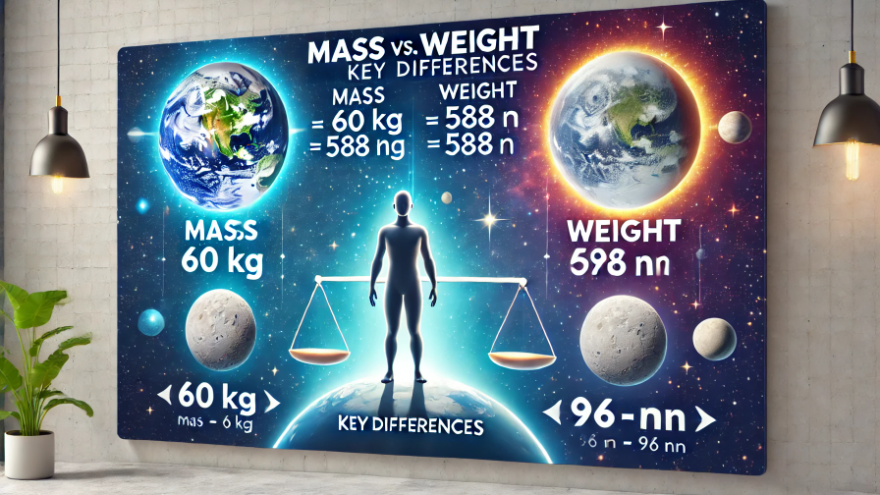Discover the difference between mass and weight. Learn their definitions, units, formulas, and how gravity impacts weight while mass stays constant.

Mass and weight are fundamental concepts in physics, but they are often confused in everyday language. Let’s break them down for clarity.
Mass is a measure of the amount of matter in an object. It is a scalar quantity, meaning it has magnitude but no direction. Mass remains constant everywhere in the universe, regardless of gravity or location. It is measured in kilograms (kg) in the SI system. For example, if your mass is 60 kg on Earth, it will remain 60 kg on the Moon, Mars, or anywhere else.
Weight, on the other hand, is the force exerted by gravity on an object. It is a vector quantity, meaning it has both magnitude and direction (toward the center of the gravitational source). Weight depends on both your mass and the local gravitational acceleration. The formula is:
Weight (W) = Mass (m) × Gravity (g)On Earth, where gravity (𝑔) is approximately 9.8 m/s2, a person with a mass of 60 kg will have a weight of:
W = 60 × 9.8 = 588 N (newtons).If you were on the Moon, where gravity is 1.6 m/s2, your weight would be:
W=60×1.6=96N.
In casual conversation, people often say, “My weight is 60 kg.” Technically, this is incorrect because kilograms measure mass, not weight. Weight should be stated in newtons, but because mass and weight are proportional on Earth, the confusion persists.
| Property | Mass | Weight |
|---|---|---|
| Definition | Amount of matter | Force due to gravity |
| Unit | Kilograms (kg) | Newtons (N) |
| Changes with gravity? | No | Yes |
| Scalar/Vector | Scalar | Vector |
While your mass remains constant regardless of location, your weight varies depending on the gravitational force. For precision, always use mass (kg) when referring to the amount of matter and weight (N) when describing the gravitational force acting on you. Understanding this distinction is essential for clear communication in science and everyday life.